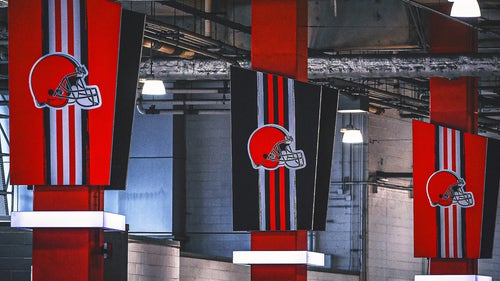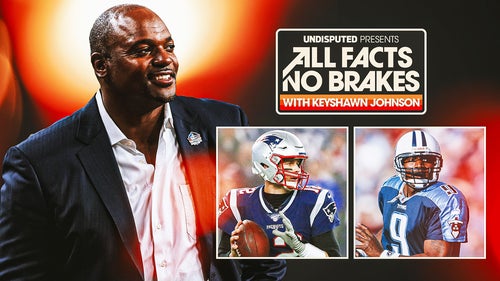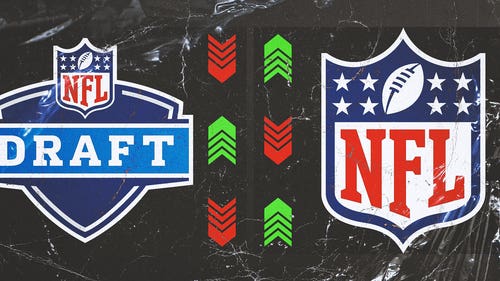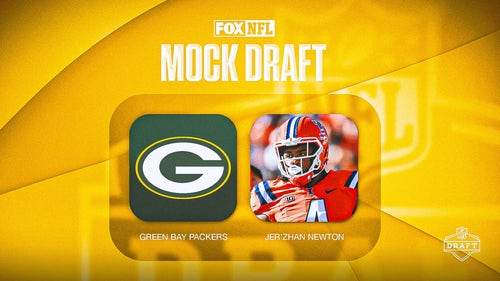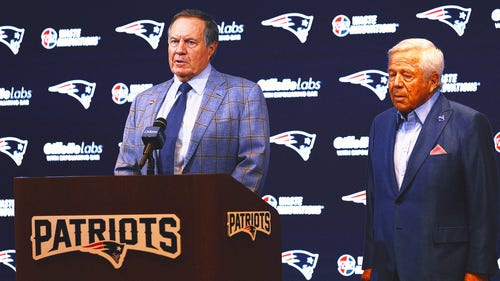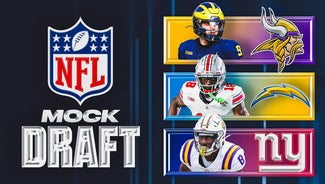
NFL's Week 13 biggest referee rulings
Who said the No. 13 is unlucky? There were a lot of great games and a lot of great calls made in Week 13 of the NFL season on Sunday, including a call so unusual, it wasn't made at all last season.
Let's go right to that play and the others that made Week 13 so great.
1. Dallas at Indianapolis
THE SITUATION: Dallas had the ball fourth-and-6 from the Indianapolis 6-yard line with 3:30 left in the fourth quarter. The Cowboys lined up to attempt a field goal. The Cowboys trailed, 28-27.
THE PLAY: David Buehler kicked a 24-yard field goal to give the Cowboys a 30-28 lead. However, a penalty was called on the Colts' Eric Foster for leverage, giving the Cowboys a first-and-goal from the 3-yard line. The Cowboys scored three plays later. After a two-point conversion, the Cowboys led, 35-28.
MY TAKE: This was the classic definition of leverage. Rule 12, Section 3, Article 1 (O) states it is unsportsmanlike conduct for a player to jump or stand on a teammate or an opponent to block or attempt to block an opponent's kick.
When Foster put his left knee on the Cowboys' Andre Gurode and extended in an attempt to block the kick, it became a foul for leverage.
This play is so uncommon that there were no leverage calls made in 2009 and only four of them made in the past five years. But, in this case, it was the proper call.
2. Atlanta at Tampa Bay
THE SITUATION: Tampa Bay had the ball, first-and-10 at the Atlanta 27-yard line with 1:58 left in the game. Tampa Bay trailed, 28-24.
THE PLAY: Tampa Bay quarterback Josh Freeman attempted a pass, but it was intercepted by the Falcons' Brent Grimes. The replay assistant initiated a review to check whether the pass might have been incomplete. The call on the field stood.
MY TAKE: Referee Tony Corrente was right not to have reversed this.
Like others, when I went on air and thought the call may be reversed, I got caught up in reviewing the play without taking into consideration that the ruling on the field was an interception. I felt the ball may have touched the ground, but, in reality, after looking at the play further, I saw the body obstructs the ball just as it may have hit the ground. There just wasn't enough evidence to overturn this ruling.
Referees have done a good job of staying away from reversing calls unless the video evidence is absolutely conclusive. My mistake.
3. Chicago at Detroit
THE SITUTATION: Chicago had the ball, first-and-10 from the Detroit 22 yard-line with 8:47 left in the game. Chicago trailed, 20-17.
THE PLAY: Jay Cutler scrambled for 8 yards to the Detroit 15-yard line and was tackled by Ndamukong Suh, who was penalized for unnecessary roughness for using a forearm to the back of Cutler's head.
MY TAKE: Rule 2, Section 2, Article 1 (C) states that all players are prohibited from “striking, swinging or clubbing to the head, neck or face with heel, back or side of the hand, wrist, arm, elbow or clasped hands.”
In other words, you can't deliver a blow — even to the runner.
After looking at the play, I don't think it was forearm, which is what referee Ed Hochuli indicated. I do think you can make a case that Suh delivered the blow to the back of the neck of Cutler. It's a judgment call and one you have to live with.
Player safety is a huge issue, and there will continue to be an emphasis by the officials to protect all players. At first, I thought this call might have taken away a fumble with a recovery by the Lions. After reviewing this aspect of the play, I saw Cutler was down, so the net result was that the penalty gave the Bears a first down at the 7-yard line, instead of having it second-and-3 at the 14.
4. Buffalo at Minnesota
THE SITUATION: Minnesota had the ball, first-and-10 at the Buffalo 31-yard line with 1:25 left in the first quarter. Minnesota trailed, 7-0.
THE PLAY: Minnesota quarterback Tarvaris Jackson attempted a 31-yard pass to Sidney Rice that was ruled incomplete on the field. Minnesota challenged the incomplete pass ruling, and the call was reversed, giving the Vikings a touchdown.
MY TAKE: This was a very interesting play that involved simultaneous possession.
Rice got joint possession with Buffalo's Leodis McKelvin while both were in the air. While coming back to the ground, Rice got both feet down in bounds, and both players maintained possession when they came to the ground out of bounds. That completes the process of the catch.
Joint possession, whether it involves recovery of a fumble or a catch of a pass, goes to the offense by rule.
5. New Orleans at Cincinnati
THE SITUATION: Cincinnati had the ball, second-and-10 from the New Orleans 29-yard line with 8:46 left in the game. Cincinnati trailed, 27-19.
THE PLAY: Carson Palmer completed an 11-yard pass to Chad Ochocinco to the New Orleans 18-yard line. New Orleans challenged the pass-completion ruling, and the play was reversed to an incomplete pass.
MY TAKE: Referee Jeff Triplette is back in my good graces. After breaking my on-air streak of correct calls last week, we agreed this week on the play here.
I went on-air saying Triplette would overturn the call, and he did. It looked like a catch, but the replay showed that the ball went in between Ochocinco's arms and the tip of the ball touched the ground. Having the ball in between the arms is not considered control, and, therefore, the ball touching the ground makes the pass incomplete.







































































































































